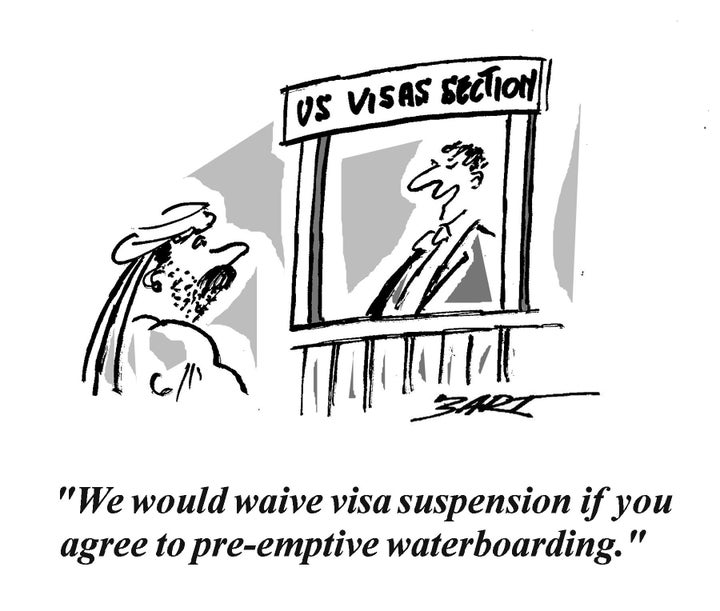
Petitions, protests and injunctions. It only took ten days for President Trump to unite much of the world against him and, possibly, plunge the United States into a constitutional crisis. With the executive order signed on 27 January 2017 which prohibits the entry into the US of citizens from seven predominantly Muslim countries, the American President made good on his electoral pledge; partially. With the stroke of a pen, and reportedly without following standard interagency review protocols, Trump took the unprecedented step of targeting over 130 million people across the Middle East and Africa, causing anger and uproar both in the US and abroad.
Thousands of people protested at major US airports and cities, decrying Trump’s order as discriminatory, irresponsible, harmful, cruel ― and unconstitutional. Judges were quick to step in too, denouncing the measure as ‘unlawful’. Federal Judge Ann M. Donnelly granted a temporary stay, at 9 p.m. on Saturday, ordering that refugees and other travelers detained at US airports not be sent back to their countries of origin. Since then, at least 16 other federal judges have vowed to challenge Trump’s travel ban. The Acting Attorney General defied the executive order, instructing her staff on Monday late afternoon not to defend it. A few hours later, Trump fired the 30-year-veteran of the Department of Justice. Already, over 1000 State Department officials and US diplomats have signed a “dissent memorandum” arguing that the order would sour US relationships with the Muslim world and will not prevent terror attacks.
For now, the White House says it will stay the course, even hinting that other countries may be added to the list. The fact that, according to the CATO Institute, a conservative US think-thank, no killing of Americans by citizens of the seven targeted countries occurred between 1975 and 2015 didn’t bother the White House; nor the fact that other predominantly Muslim countries, whose nationals are believed to have killed Americans on US soil, are not on the list; or that the Trump Organization has hotels and business interests in those countries.
So while Trump continues to tweet about how his plans will keep ‘a lot of bad dudes’ out of the US, appealing to the primal instincts of a largely misinformed segment of the American population (a recent poll suggests that 48 percent of Americans support his order ‘to keep America safe’), the reality remains that blanket discriminatory measures will not make America any safer. And certainly not when you consider that between 2001 and 2013, 406,496 people died as a result of firearms violence versus 3,380 Americans killed in ‘terrorist’ incidents at home and abroad, including the 9/11 victims.
The legality of the US President’s executive order will be litigated in courts, possibly all the way to the Supreme Court. And because of the constitutional questions the order entails, such as the clause granting preferential treatment to non-Muslims from the seven targeted countries, Congress is bound to engage in a passionate debate on the First Amendment, and on a possible draft legislation Democrats may introduce. Could the President be rebuffed by Congress so soon? Time will tell. But true to his style, Trump will sign another controversial executive order that will deflect attention from the preceding one. He announced on Sunday evening that he will be making public his Supreme Court nominee at 8 p.m. on Tuesday night, a move that will shift the media’s attention away from the ban: if there is something the President cannot be accused of, it is not knowing how to play the media cycle.
But by opening too many fronts at once, domestically and internationally, the White House will soon reach a critical point. Within a few hours, an online petition in the United Kingdom received more than a million signatures to prevent Trump’s State visit. The House of Commons will have to debate the question. German Chancellor Angela Merkel criticized the ban, reminding Trump of governments’ obligations under the Refugee Convention. The British Prime Minister, Theresa May, who was walking hand-in-hand with Trump in the White House hours before he signed the executive, was compelled to express public criticism of the ban. The new Secretary-General of the UN prompted loud applause at the African Union’s Summit when he slammed the closure of borders “even in the most developed countries of the world”. The UN High Commissioner for Human Rights tweeted that “discriminating on nationality alone is forbidden under human rights law”, adding the ban is “mean-spirited”.
Trump is already ruffling feathers all around: He was gently put on notice by his Chinese counterpart who took a thinly veiled swipe at the American President when he warned that ‘protectionism is like locking oneself in a dark room’. The Mexican President cancelled a visit to Washington on short notice in protest against ‘the wall’. And Argentina is coming to terms with the White House’s decision to suspend a lemon trade agreement; yes, lemons!
Above all, the latest executive order sounds alarm bells about the way Trump makes policy. For now, he may feel emboldened and self-assured that he has a mandate to deliver on his electoral populist pledges. But he will soon realize that politics and statecraft is a tougher business than making real estate deals. And if they feel any traction, some of the leading Republicans, who have long disliked him, could turn against him, again, if his administration dismisses judges’ injunctions and takes constitutionally dubious actions. Already, impeachment is on some lips. The rise of Trump stunned the world; if he is not careful, so will his downfall.
